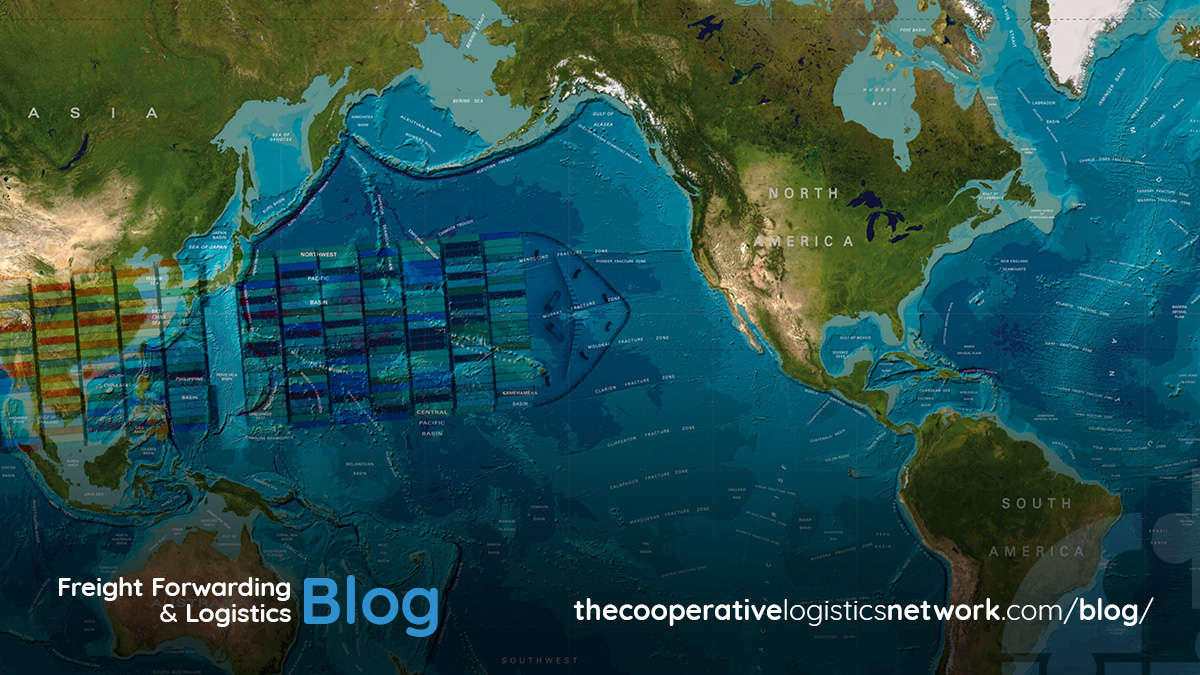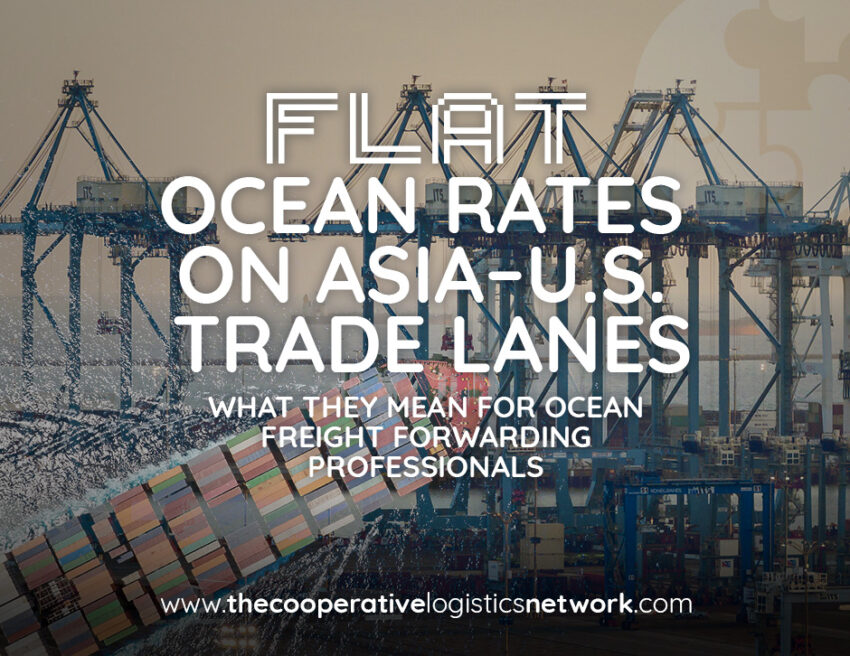If you’re an independent freight forwarder working in ocean freight forwarding, the recent news about spot rate stability on Asia–U.S. trade lanes might seem like a welcome break from volatility. But the reality is far more complex. According to Xeneta, average container spot rates from Asia to the U.S. West and East Coasts have held flat since mid-April—$2,790 and $3,830 per FEU, respectively. Behind this apparent steadiness lie shrinking volumes, rising tariffs, and a strategic uptick in blank sailings from carriers reacting to an increasingly unpredictable market.
Let’s unpack what this “pause” in rate movements actually means—and why forwarders should tread carefully in the months ahead.

Demand Dips, Tariffs Surge
Since the start of 2025, spot rates from Asia to both U.S. coasts have dropped dramatically—down 52% to the West Coast and 44% to the East. That’s a striking decline, even by volatile industry standards, and it points directly to diminishing demand and geopolitical interference.
One of the largest drivers of this decline is the U.S. government’s new wave of tariffs, which kicked in at the start of April and pushed duties on Chinese imports as high as 145%. In response, shippers rushed to move cargo before the tariffs took hold, spiking volumes temporarily and keeping rates afloat through early April.
But as April drew to a close, so too did that artificial surge in activity. Freightos reported a 30–50% drop in demand out of China, and by early May, carriers were adjusting capacity to reflect the slowdown.
Ocean Freight Forwarding in a Blanked-Out Market
For ocean freight forwarding professionals, the ripple effects of these changes are deeply felt. Carriers are turning to a familiar playbook—blank sailings. In fact, over 60 blank sailings were recorded between Asia and North America from early April to early May, with more than 40 to the West Coast and 20 to the East Coast, according to Sea Intelligence.
The week of April 21 saw the peak, with 16 sailings canceled—a stark indication that carriers are willing to pull back hard on capacity to prevent a pricing freefall. According to Xeneta’s Chief Analyst Peter Sand, this is eerily reminiscent of the tactics used during the early COVID-19 disruption, when blank sailings were a lifeline for rate preservation.
These capacity reductions have helped stabilize the market for now. But let’s be clear: this is a temporary fix. The plateau in rates reflects tight control over supply, not a rebound in demand. The moment consumer purchasing drops further—or tariffs make goods too expensive for U.S. buyers—rates could tumble again.
A Shaky Road Ahead for Q2
The second quarter of 2025 is poised to test the resilience of the industry. If tariffs continue to dampen consumer demand, the shipping slowdown could deepen, especially for goods moving from China. In that case, blank sailings may escalate, stretching lead times and complicating space guarantees for ocean freight forwarding teams trying to maintain dependable service for clients.
For now, the flat rates are like a pause button—but not one that promises peace. As Peter Sand notes, “The current flat spot market is probably a fairly brief interlude before the downwards trend continues.” That’s a sobering forecast that suggests now is the time to prepare, not relax.
What About Air Freight? And Is It a Viable Backup?
As ocean freight forwarding becomes more unpredictable due to fluctuating volumes and sailing schedules, some forwarders might consider pivoting toward air freight forwarding to ensure service continuity. While air rates are generally higher, they may become more attractive for shippers looking to bypass delayed ocean schedules or avoid tariff-driven inventory stockouts.
Still, capacity in air freight is also constrained on some routes, so forwarders will need to weigh flexibility and cost carefully. Offering both ocean and air options could become a vital part of a forwarder’s value proposition in this uncertain climate.
Strategic Moves for Ocean Freight Forwarding Companies
Now more than ever, companies involved in ocean freight forwarding need to stay agile and informed. The best strategy during a flat rate period isn’t to stand still—it’s to use the breathing room to solidify carrier relationships, renegotiate contracts where possible, and educate clients about the changing landscape.
This is also the time to assess your current routing and pricing tools. Dynamic pricing and real-time tracking technologies can help your operations remain lean and responsive. Clients want transparency and reliability; delivering both will set you apart as the market continues to shift.
Moreover, forwarders should continue monitoring the geopolitical situation and evolving tariff schedules. Any additional announcements from the U.S. or Chinese governments could spark new disruptions—or new opportunities.
Final Thoughts: Flat Doesn’t Mean Stable
To the untrained eye, a flat spot rate may seem like a market in balance. But for those of us in the trenches of ocean freight forwarding, it’s clear that this flatness masks an unstable foundation. Shrinking demand, blank sailings, and tariff turbulence are all pressing issues that could erupt again at any time.
Freight forwarders who understand the deeper currents beneath this surface calm will be the ones best equipped to guide their clients through what lies ahead. The calm may not last—but your preparedness can.


